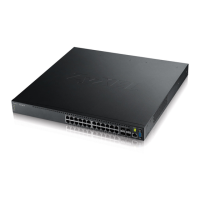
Do you have a question about the ZyXEL Communications GS3700 Series and is the answer not in the manual?
| Brand | ZyXEL Communications |
|---|---|
| Model | GS3700 Series |
| Category | Switch |
| Language | English |
Introduces the main features and applications of the switch, covering its hardware and management methods.
Details the process of installing and connecting the switch, including freestanding and rack mounting.
Describes the front and rear panels of the switch, including port connections and LEDs.
Details the HTML-based management interface and supported browsers for switch setup.
Explains how to access the switch via a web browser using its IP address and default credentials.
Describes the navigation panel components and quick links for managing the switch.
Explains how to save configuration changes to run-time memory and non-volatile memory.
Covers reloading the factory-default configuration file to restore the switch to its initial state.
Allows checking firmware version and monitoring switch temperature, fan speeds, and voltage.
Covers configuring general settings like system name, time, and contact person.
Details configuring global switch parameters such as VLAN type and MAC address learning.
Explains configuring the default gateway, domain name server, and managing IP domains.
Allows configuring port settings like speed, duplex mode, flow control, and priority.
Covers setting priority levels for distributing power to PDs and managing PoE modes.
Details configuring IPv6 addresses on physical or virtual interfaces.
Guides on configuring global IPv6 settings, interface setup, and addressing.
Explains how to configure switches for stacking mode and manage master election.
Covers configuring and viewing default DNS servers for domain name resolution.
Explains tagged VLANs, their membership identification, and frame format.
Details GARP and GVRP protocols used for automatic VLAN membership registration.
Enables frames belonging to unknown VLAN groups to pass through a port.
Covers static VLAN configuration for deciding frame forwarding based on VLAN tag.
Displays a summary of configured VLANs, including index, VID, elapsed time, and status.
Provides detailed port settings and status of VLAN groups, including private VLAN information.
Shows information for all private VLANs, including primary, secondary, and type.
Covers viewing IEEE 802.1Q VLAN parameters and configuring static, subnet, or protocol-based VLANs.
Allows grouping traffic into logical VLANs based on source IP subnet.
Groups traffic into logical VLANs based on specified protocols like IP or AppleTalk.
Configures port-based VLANs where packet forwarding is based on destination MAC address.
Ensures IP phone call quality by separating voice traffic into a dedicated VLAN.
Assigns incoming untagged packets to a VLAN based on the source MAC address.
Discusses configuring forwarding rules based on MAC addresses for enhanced security.
Details how to manually enter static MAC addresses to reduce broadcasting needs.
Explains static multicast MAC addresses and how they are used to forward traffic.
Covers configuring rules to forward specific multicast frames to specific ports.
Details how to configure the switch to filter traffic based on source/destination MAC and VLAN.
Explains how STP/RSTP detects and breaks network loops, providing backup links.
Defines key terms like root bridge and path cost for spanning tree operations.
Describes the process of determining the lowest cost spanning tree and enabling ports.
Explains the five port states used by STP to eliminate packet looping.
Covers Multiple Spanning Tree Protocol (IEEE 802.1s) features and limitations.
Allows viewing STP mode configuration and status.
Details how to activate STP modes (RSTP, MRSTP, MSTP) on the switch.
Guides on configuring RSTP settings for faster spanning tree convergence.
Displays the status of RSTP configuration and port states.
Details how to configure MRSTP and MSTP for managing multiple spanning trees.
Shows the status of MSTP configuration, including bridge ID and port roles.
Explains defining maximum allowable bandwidth for incoming and outgoing traffic flows on a port.
Defines Committed Information Rate (CIR) and Peak Information Rate (PIR) for traffic policing.
Guides on configuring bandwidth control settings via the web interface.
Limits broadcast, multicast, and DLF packets per second on ports to prevent storms.
Allows copying traffic flow to a monitor port for traffic examination without interference.
Configures mirroring ports and monitor port on the same device.
Sets up RMirror VLAN for forwarding mirrored traffic across the network.
Configures the reflector port and traffic direction for remote port mirroring.
Specifies the RMirror VLAN and monitor port when the switch is the destination device.
Selects ports to forward mirrored traffic to other switches or receive traffic.
Explains grouping physical ports into a logical link for higher bandwidth and redundancy.
Details support for IEEE 802.3ad standard and Link Aggregation Control Protocol (LACP).
Guides on configuring static link aggregation groups and criteria.
Covers enabling dynamic link aggregation using LACP.
Provides a practical example of creating a static port trunk group.
Explains validating access to ports using IEEE 802.1x and MAC authentication methods.
Details the process of client authentication using username and password via RADIUS server.
Describes MAC authentication using client MAC address and a configured password.
Guides on activating port authentication methods and configuring RADIUS server settings.
Steps to activate IEEE 802.1x security on the switch and its ports.
Enables and assigns a guest VLAN to a port for unauthenticated users.
Details the process to activate MAC authentication on the switch.
Explains port security allowing only learned or static MAC addresses to pass through a port.
Guides on enabling port security, disabling MAC learning, and configuring static MAC addresses.
Sets the MAC address learning limit on a per-port and per-VLAN basis.
Explains setting time ranges for time-oriented features like Classifier ACL.
Covers configuring time ranges in Absolute and Periodic modes.
Introduces Quality of Service (QoS) for prioritizing traffic and traffic classification.
Allows viewing configured classifiers and how many times traffic matches the rules.
Defines classifiers to sort traffic into different flows and specifies actions for matching rules.
Provides a summary table of classifier configurations and allows editing rule settings.
Covers configuring match order and enabling logging for classifiers.
Demonstrates configuring a classifier to identify traffic based on MAC address and port.
Explains how classifiers distinguish traffic and policy rules ensure requested treatment.
Covers Differentiated Services model for marking packets with DSCP for per-hop treatment.
Details the DSCP field in the IP header and its role in determining forwarding behavior.
Guides on configuring policy routes to override default routing based on classifiers and actions.
Demonstrates configuring a policy to limit bandwidth and discard out-of-profile traffic.
Introduces queuing methods to solve performance degradation during network congestion.
Explains SP queuing that services queues based on priority only.
Details WFQ for guaranteeing minimum bandwidth based on queue weight during congestion.
Describes WRR for servicing queues on a rotating basis based on priority and weight.
Guides on configuring queuing algorithms for outgoing traffic.
Explains using VLAN stacking to distinguish multiple customer VLANs within a network.
Defines port roles: Normal, Access Port, and Tunnel Port for VLAN stacking.
Describes the format of a VLAN tag for service provider or customer 802.1Q stacking.
Guides on configuring VLAN stacking settings via the web interface.
Allows the switch to treat all frames on a port as the same VLAN flows and add an outer VLAN tag.
Adds different outer VLAN tags to incoming frames based on their inner VLAN tags.
Introduces multicast features like IGMP and MLD protocols for group communication.
Explains IPv4 and IPv6 multicast address ranges and their functionality.
Controls which IGMP groups subscribers can join on a port for multicast service distribution.
Details how the switch passively snoops IGMP packets to learn multicast group membership.
Covers performing IGMP snooping on up to 16 VLANs in auto or fixed mode.
Describes the ZyXEL proprietary feature for IPv6 MLD proxy to minimize control messages.
Explains MLD general queries, MLD Report, and MLD Done messages.
Guides on configuring IGMP for IPv4 or MLD for IPv6 and setting up multicast VLANs.
Shows IPv4 multicast group information and IGMP snooping status.
Details the configuration of IGMP snooping for multicast traffic forwarding.
Covers enabling IGMP snooping on specific VLANs or automatically learning membership.
Specifies multicast IP address ranges for clients allowed to join multicast groups.
Displays IPv6 multicast group information, including MLD snooping and filtering.
Guides on configuring MLD snooping-proxy settings to minimize control messages.
Covers configuring MLD snooping-proxy settings for specific VLAN interfaces.
Sets port roles (Downstream, Upstream, None) for MLD snooping-proxy in VLANs.
Configures the switch's MLD filtering settings to control multicast group access.
Creates MLD filtering profiles to set multicast address ranges for allowed joins.
Introduces Multicast VLAN Registration (MVR) for sharing multicast VLANs across networks.
Defines MVR port types: Source port and Receiver port.
Explains MVR operation modes: Dynamic and Compatible.
Illustrates MVR operation with a multicast television example.
Guides on creating multicast VLANs and selecting receiver and source ports.
Covers configuring MVR IP multicast group addresses.
Provides an example of configuring MVR settings for multicast VLANs.
Explains the AAA processes: determining user identity, defining access rights, and recording actions.
Describes storing user profiles locally for authentication and authorization.
Compares RADIUS and TACACS+ security protocols for external authentication.
Guides on enabling authentication, authorization, and accounting settings on the switch.
Details configuring RADIUS server settings for authentication and accounting.
Covers configuring TACACS+ server settings for authentication and accounting.
Explains configuring authentication, authorization, and accounting settings via AAA setup screen.
Lists RADIUS attributes for authentication and accounting elements in user profiles.
Details attributes sent to RADIUS server for authentication, including Privilege Access.
Lists attributes sent to RADIUS server for accounting, covering system and exec events.
Explains using a binding table to distinguish authorized/unauthorized DHCP and ARP packets.
Guides on using IP Source Guard screens for bindings, DHCP snooping, and ARP inspection.
Covers viewing current bindings for DHCP snooping and ARP inspection.
Details creating and managing static bindings for DHCP snooping and ARP inspection.
Provides statistics about the DHCP snooping database.
Enables DHCP snooping, specifies VLAN for DHCP server, and configures the database.
Specifies whether ports are trusted or untrusted for DHCP snooping.
Enables DHCP snooping on VLANs and specifies Option 82 information relay.
Applies a different DHCP option 82 profile to specific ports within a VLAN.
Shows MAC address filters created due to unauthorized ARP packets.
Provides statistics about ARP packets received in each VLAN.
Allows viewing log messages generated by ARP packets.
Enables ARP inspection and configures record storage and global settings.
Specifies trusted/untrusted ports for ARP inspection and maximum packet rate.
Enables ARP inspection on VLANs and specifies log message generation.
Explains using a binding table to validate IPv6 traffic sources.
Allows viewing and removing dynamic IPv6 bindings based on address or prefix.
Guides on manually creating IPv6 source guard binding table entries.
Defines policies to forward valid IPv6 addresses/prefixes and manage link-local traffic.
Applies configured IPv6 source guard policies to specified ports.
Dynamically creates IPv6 source guard binding tables using DHCPv6 snooping policies.
Enables DHCPv6 snooping policy on specific VLAN interfaces.
Specifies which ports are trusted or untrusted for DHCPv6 snooping.
Provides background information on DHCP Snooping and ARP Inspection.
Explains using DHCP snooping to filter unauthorized DHCP packets and build binding tables.
Differentiates trusted and untrusted ports for DHCP snooping and ARP inspection.
Explains how Loop Guard detects and disables physical one-way links to prevent loops.
Guides on enabling loop guard on the switch and ports.
Explains mapping VLAN IDs and priorities from private networks to service provider networks.
Illustrates VLAN mapping by translating VLAN IDs for incoming packets.
Covers the steps to enable and display the VLAN mapping screen.
Guides on enabling and editing VLAN mapping rules.
Explains L2PT for tunneling layer-2 protocols like STP, CDP, and VTP across networks.
Defines two modes: Access (ingress) and Tunnel (egress) for layer-2 protocol tunneling.
Guides on configuring L2PT settings via the navigation panel.
Introduces sFlow as a technology for monitoring switched networks and analyzing traffic.
Covers configuring sFlow to monitor traffic and send data to an sFlow collector.
Details configuring up to four sFlow collectors for traffic monitoring.
Explains the PPPoE Intermediate Agent (PPPoE IA) deployed between PPPoE server and clients.
Describes the vendor-specific tag format for PADI and PADR packets from PPPoE clients.
Details the formats for Agent Circuit ID and Agent Remote ID sub-options.
Explains configuring Circuit ID strings with variables for PPPoE clients.
Describes the default Circuit ID syntax defined in DSL Forum Working Text (WT)-101.
Defines port states (Trusted/Untrusted) for PPPoE intermediate agent.
Guides on configuring the PPPoE Intermediate Agent on the switch.
Covers configuring the switch to provide subscriber information to PPPoE termination servers.
Specifies trusted/untrusted ports and adding extra info to PPPoE discovery packets per port.
Configures PPPoE IA settings for a specific VLAN on a port.
Sets PPPoE Intermediate Agent enablement on a VLAN and appending Circuit/Remote ID.
Explains configuring rate limits for control packets and undoing actions after errors resolve.
Details limiting control packets (ARP, BPDU, IGMP) to enhance CPU efficiency.
Describes automatically undoing actions like port shutdown after errors are resolved.
Guides on viewing Errdisable Status, CPU Protection, Errdisable Detect, and Recovery.
Covers configuring error disable related settings.
Views port status, feature requirements, and configured actions for detected errors.
Limits the maximum number of control packets (ARP, BPDU, IGMP) on a port.
Detects control packet rate limit exceedance and configures actions.
Sets the switch to automatically undo actions once the error condition is resolved.
Explains setting port priority for MAC address learning to enhance security.
Guides on enabling MAC pinning on the switch and specific ports.
Explains blocking traffic between ports in the same VLAN using Community and Isolated VLANs.
Guides on creating VLAN IDs for Primary, Isolated, or Community VLANs via Static VLAN screen.
Details ways to reduce switch port power consumption using EEE, Auto Power Down, and Short Reach.
Guides on configuring Energy Efficient Ethernet, Auto Power Down, and Short Reach settings.
Introduces LLDP as a layer 2 protocol for advertising device identity and capabilities.
Explains LLDP-MED as an extension for media endpoint devices, enhancing topology management.
Navigates to LLDP Local Status, Remote Status, and Configuration screens.
Displays a summary of LLDP status on the switch, including basic and MED TLVs.
Provides a summary of LLDP status for connections to neighboring switches.
Covers configuring global LLDP settings, including basic and organization-specific TLVs.
Guides on configuring LLDP-MED parameters like Notification, Location, and Network Policy.
Configures organization-specific TLV settings for network policies like Voice and Video.
Covers configuring location information using geographical coordinates and Civic Address.
Explains detecting unusual ARP scan activity and blocking suspicious hosts or ports.
Guides on using Anti-Arpscan Status, Host Status, Trust Host, and Configure screens.
Shows trusted/untrusted ports and their status (Forwarding or Err-Disable).
Allows viewing blocked hosts and unblocking them.
Covers creating or removing trusted hosts identified by IP address and subnet mask.
Enables Anti-Arpscan, sets port/host thresholds, and configures trusted/untrusted ports.
Explains preventing new STP-aware switches from causing topology changes by detecting BPDUs.
Guides on viewing BPDU Guard Status and enabling BPDU Guard.
Shows whether BPDU guard is enabled and the port status.
Covers turning on the BPDU guard feature on the switch and ports.
Introduces Ethernet OAM (Operations, Administration and Maintenance) as a link monitoring protocol.
Guides on viewing OAM Status, configuring OAM, and performing remote loopback tests.
Displays configuration and operational status of ports with Ethernet OAM enabled.
Provides detailed OAM configuration and operational status for specific ports.
Covers enabling Ethernet OAM on the switch and ports.
Guides on performing remote-loopback tests to check link status.
Explains ZyXEL Unidirectional Link Detection (ZULD) for detecting and disabling physical one-way links.
Guides on viewing ZULD status and enabling ZULD on ports.
Highlights requirements for ZULD, including enabling OAM and port settings.
Displays details of unidirectional and bidirectional links discovered by ZULD.
Covers enabling ZULD on a port, configuring mode, and setting probe time.
Explains using static routes to send data to devices not reachable via the default gateway.
Guides on configuring IPv4 and IPv6 static routing rules.
Details creating static routes for IPv4 destinations, including IP address and subnet mask.
Covers creating static routes for IPv6 destinations, including prefix length and next hop.
Explains how policy routing overrides default behavior based on defined policies and classifiers.
Highlights benefits like Source-Based Routing, Cost Savings, and Load Sharing.
Guides on configuring policy routing profiles and rules based on classifiers and actions.
Details configuring policy routes to override default routing behavior.
Introduces Quality of Service (QoS) for prioritizing traffic flows based on application types.
Explains the DSCP field and its role in determining Per-Hop Behavior (PHB).
Depicts a DiffServ network for classifying and marking incoming packets.
Details traffic policing using TRTCM to limit transmission rates based on CIR and PIR.
Explains TRTCM color-blind mode where packets are evaluated regardless of prior marking.
Describes TRTCM color-aware mode where evaluation uses existing packet loss priority.
Covers activating DiffServ to apply marking rules or 802.1p priority mapping.
Guides on configuring TRTCM settings for traffic policing.
Explains creating DSCP profiles for assigning DSCP values to packets based on color.
Covers configuring DSCP to 802.1p mapping for traffic prioritization.
Details changing DSCP to 802.1p mapping via the DSCP Setting screen.
Introduces DHCP for obtaining TCP/IP configuration and configuring the switch as a server or relay agent.
Explains configuring the switch as a DHCP server or a DHCP relay agent.
Divides DHCP configuration into Global and VLAN screens for network services.
Guides on enabling and configuring DHCPv4 server/relay settings.
Displays configuration settings related to the switch's DHCP server and relay modes.
Provides details regarding DHCP server settings configured on the switch.
Covers configuring DHCP relay when clients and server are not in the same broadcast domain.
Explains adding Relay Agent Information to DHCP requests for authentication.
Guides on creating DHCPv4 option 82 profiles for relaying DHCP requests.
Covers configuring global DHCPv4 relay settings.
Applies a DHCP option 82 profile to specific ports within a VLAN.
Guides on configuring DHCP settings based on VLAN domain of DHCP clients.
Applies a different DHCP option 82 profile to specific ports in a VLAN.
Illustrates DHCP relay configuration for two VLANs with different DHCP servers.
Displays information on DHCPv6 server and status.
Covers configuring DHCPv6 and DNS server settings.
Enables IPv6 devices to use received IPv6 prefix to generate IP addresses.
Configures DHCPv6 relay settings for a specific VLAN on the switch.
Explains Virtual Router Redundancy Protocol (VRRP) for redundant backup gateways.
Displays the status of virtual routers, including Master/Backup roles and uplink status.
Covers configuring IP interface setup and VRRP parameters.
Details creating an IP interface (routing domain) before configuring VRRP.
Describes VRRP parameters like Advertisement Interval, Priority, and Preempt Mode.
Provides a summary of VRRP configuration entries.
Illustrates VRRP configuration with examples for one subnet and two subnets.
Explains Equal-Cost MultiPath (ECMP) for forwarding packets via multiple routing paths.
Guides on setting up load sharing using ECMP routing.
Introduces Address Resolution Protocol (ARP) for mapping IP to MAC addresses.
Explains the process of ARP requests and replies for address resolution.
Details the three ARP learning modes: ARP-Reply, Gratuitous-ARP, and ARP-Request.
Explains how ARP-Reply learning mode updates the ARP table with ARP replies.
Describes gratuitous ARP for detecting IP collisions and informing devices of MAC address changes.
Explains how ARP-Request learning mode updates the ARP table with ARP replies and requests.
Guides on setting ARP learning mode and creating static ARP entries.
Covers configuring each port's ARP learning mode.
Details creating static ARP entries that do not age out.
Allows managing firmware and configuration files, including upgrade, backup, and restore.
Guides on uploading and specifying firmware images for the switch.
Explains restoring a previously saved configuration file from a computer to the switch.
Details creating configuration snapshots for later restoration.
Clears current configuration information on the switch, but not factory defaults.
Allows restarting the switch without powering it off, loading various configurations.
Provides a log enhancement tool for CPU utilization, memory, and crash reports for issue analysis.
Shows examples of uploading/downloading files using FTP commands and filename conventions.
Describes controlling access via console, Telnet, SSH, FTP, Web, and SNMP.
Displays the main screen for managing access control settings.
Explains Simple Network Management Protocol (SNMP) for managing network devices.
Details SNMP v3 enhancements for security, including authentication and encryption.
Lists supported Management Information Bases (MIBs) for collecting statistics.
Describes SNMP traps sent to a manager when events occur, categorized by option.
Guides on configuring SNMP settings, including community strings and trap destinations.
Specifies types of SNMP traps to be sent to each SNMP manager.
Covers setting whether traps received on a port are sent to the SNMP manager.
Explains creating SNMP users for authentication with managers using SNMPv3.
Guides on configuring administrator and non-administrator login accounts for web access.
Describes SSH as a secure communication protocol combining authentication and encryption.
Explains the process of establishing a secure SSH connection between hosts.
Details SSH version 2 support and requirements for using an SSH client.
Explains HTTPS as a web protocol for secure data transactions using SSL/TLS.
Provides examples of browser warning messages and certificate installation for HTTPS access.
Explains using the Diagnostic screen to check system logs and perform ping or port tests.
Explains that log messages store information for viewing.
Covers checking current system logs, refreshing, clearing, and downloading logs.
Explains the syslog protocol for sending event notification messages to syslog servers.
Guides on configuring system logging settings and external syslog servers.
Introduces managing switches through a cluster manager for communication within a VLAN group.
Displays the role of switches within the cluster (Manager, Member, None).
Guides on accessing cluster member switches' web configurator home pages.
Covers configuring clustering management settings, including cluster manager and candidates.
Introduces the MAC table for showing how frames are forwarded or filtered across switch ports.
Guides on searching specific MAC addresses and adding dynamic MAC entries.
Explains the IP table showing how packets are forwarded or filtered across switch ports.
Guides on viewing IP table information and sorting data by IP address, VLAN, or port.
Introduces the ARP table for mapping IP addresses to MAC addresses.
Explains the ARP process for resolving IP to MAC addresses.
Guides on viewing IP-to-MAC address mappings and removing dynamic ARP entries.
Introduces the routing table containing route information for network reachability.
Guides on viewing routing table information and sorting data by destination, gateway, or interface.
Introduces Path MTU Discovery for determining the minimum link MTU in a path.
Covers viewing IPv6 path MTU information on the switch.
Allows copying basic and advanced settings from a source port to destination ports.
Explains the IPv6 neighbor table for resolving and verifying neighbor addresses.
Guides on viewing IPv6 neighbor information on the switch.
Provides solutions for issues related to switch power, hardware, and LED status.
Addresses issues with forgotten IP address, username, password, or login screen access.
Covers lost configuration settings after switch restart and unauthorized access prevention.
Lists commonly used services, their protocols, port numbers, and descriptions.
Explains IPv6 features, address size, and addressing format.
Describes IPv6 address prefix and prefix length specification.
Explains the link-local address for unique device identification on a local network.
Defines global addresses for internet identification, similar to public IPv4 addresses.
Explains IPv6 multicast addresses providing the same functionality as IPv4 broadcast addresses.
Details automatic IPv6 address generation using prefix and interface ID.
Introduces DHCPv6 as a protocol for assigning IPv6 network addresses.
Explains DHCP relay agent's role in forwarding messages between clients and servers.
Provides information on contacting ZyXEL support offices worldwide for assistance.
Lists essential details needed when contacting support, like model and serial number.
States copyright information and ZyXEL's liability disclaimer.
Includes FCC and Industry Canada statements for compliance.
Provides WEEE directive information for product disposal and recycling.
Details the product warranty terms and conditions.
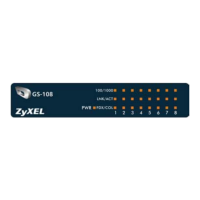

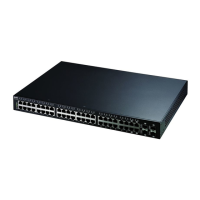
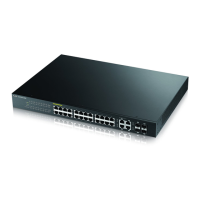


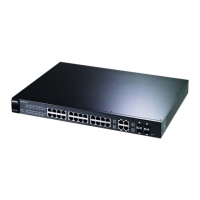


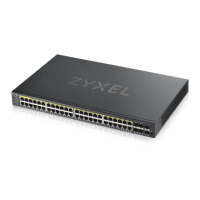
